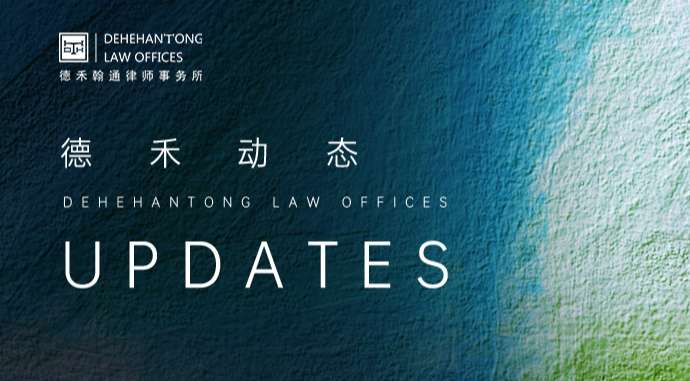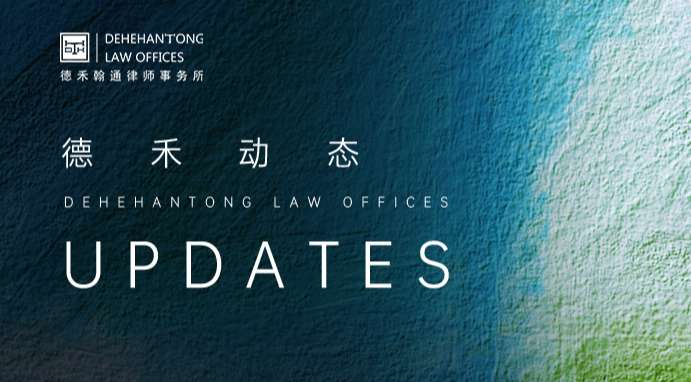Securities Crime: Securities Issuance (Part Two) : Defense Strategies - Key Points and Evidence Breakthroughs (Part Two)
The success or failure of securities issuance often directly relates to the survival and development of an enterprise. When the issuance process crosses the legal red line, how to formulate the correct strategy to help the enterprise and its main responsible personnel get out of the criminal predicament as soon as possible and reduce losses directly determines the ultimate direction of the enterprise's crisis. Securities-related crimes, as one of the most complex branches in the criminal field, the full participation of defense lawyers can help enterprises successfully break through and defuse crises. The common issues of criminal cases in the issuance stage have been interpreted in detail in the previous text. This article will provide defense strategies for specific charges one by one.
01. The crime of fraudulently issuing securities - the most severely punished securities crime
(1) Qualitative issue: Whether it constitutes a crime
1.Review "significance" and "materiality" - the criteria that influence investors' major decisions
Article 160 of the Criminal Law of the People's Republic of China stipulates the crime of fraudulent issuance, which includes two types of acts: concealing important facts or fabricating major false content in the issuance documents, but does not explain the "materiality". From a result-oriented perspective, the implementation of acts that meet the materiality standards stipulated in the Securities Law may be suspected of being criminal. However, from a defense perspective, an accurate distinction should be made between criminal offenses and administrative violations, and they should not be confused.
In 2023, with the implementation of the full registration system, the targets of fraudulent content have changed. Under the review system, if a company states false content in important documents, it will affect whether it can issue. However, under the registration system, false content in the issuance process directly points to investors' investment decisions. Therefore, whether it meets the materiality standard needs to directly affect investors' decisions. Specifically:
First, it directly affects whether investors invest or not. The determination of "materiality" in the crime of fraudulently issuing securities needs to be distinguished from administrative standards. At the criminal level, "materiality" should be limited to the core prerequisite that directly affects whether investors make investments, rather than general information disclosure flaws.
If false information involves the fundamental supporting elements of the solvency of the investment target, such as government guarantee documents, proof of ownership of core assets, and credit endorsement of the actual controller, it should be recognized as a criminal materiality standard because it directly undermines the investor's judgment basis on the possibility of principal and interest repayment. In the "Dongfei Mazoli case", the irrevocable joint and several liability guarantee materials provided by the government financing platform are an important basis for investors to determine whether to purchase private placement bonds. Therefore, the authenticity of such guarantee materials is an important fact. Fabricating this important fact that affects the investment premise of investors meets the material element of the crime of fraudulatively issuing securities. Moreover, such elements are irreplaceable - for instance, if the private placement bonds involved in this case are not guaranteed by the government, their credit ratings will drop to non-investment grade, directly affecting the feasibility of issuance. On the contrary, some major facts that meet the requirements of administrative penalties, although they have caused certain consequences, should not be treated as criminal standards. For instance, behaviors such as inflating a small amount of operating income and concealing important related-party transactions can only reach the level of administrative penalties. Such general information disclosure flaws are not directly sufficient to affect whether investors invest or not. Of course, the above-mentioned behaviors may involve other charges such as illegal information disclosure, but they should not be constituent elements of the crime of fraudulently issuing securities.
Second, the particularity of the industry should be fully considered. The determination of the "materiality" of the crime of fraudulently issuing securities still needs to be differentiated in combination with the core elements of the industry. It should not be limited to a certain type of enterprise, but should cover all enterprises with special risks in the industry. The "materiality" at the criminal level needs to meet two industry-related conditions: namely, 1) Whether the false information involves the core variables of the industry's value assessment; 2) Whether false information is sufficient to trigger systemic risks in the industry or the failure of the market pricing mechanism.
The core variables of value assessment vary across different industries. For the technology industry, concealing the source of core technologies (such as patent infringement risks and reliance on overseas licensing), the authenticity of research and development progress (such as falsifying clinical trial data), and the risks of technological substitutability (such as the elimination of process routes) should fall within the category of criminal materiality. For traditional manufacturing industries, if they conceal facts such as environmental compliance (such as not obtaining a pollutant discharge permit) and production qualification deficiencies (such as not filing special equipment) that may lead to the risk of suspension of production and business operations, it can constitute a criminal offense as it involves the ability to continue operating.
2. Whether there is a causal relationship between major false content and investors' losses
There are numerous factors influencing the rise and fall of securities market prices. In judicial practice, courts usually take the fluctuation range of stock prices and trading volumes before and after trading days as a reference for such cases. During the investigation process, attention should be paid to whether major false content is an independent factor of price fluctuations. The specific defense reasons are:
First, investors' losses are caused by systemic risks in the securities market. Courts usually quantify the impact ratio of systemic risks through index comparison methods or multi-factor methods. If it is calculated that the decline of an individual stock is not much different from the decline of the comprehensive index during the same period, the liability can be mitigated or exempted.
Second, the losses were jointly caused by multiple other factors. In civil cases, courts will assess the proportion of liability based on the weight of the major false content in light of the specific circumstances of the case. However, this is not the case in criminal cases. The proof standard for criminal cases requires the exclusion of reasonable doubt. The author believes that only when it can be proved that the major false content is the single factor causing losses to investors can it be determined that there is a causal relationship between the fraudulent act and the damage consequences.
(2) Quantitative issues: Defense for lesser guilt
1. Review the time of the incident: The principle of applying the old case and the lenient one
As this crime was revised in the Amendment (XI) to the Criminal Law, the maximum sentence for this crime was five years before the revision, but it has been increased to more than five years after the revision. Therefore, defense lawyers need to pay attention to whether the incident occurred before March 1, 2021. If it occurred before, it should be convicted and sentenced according to the crime of fraud-issuing stocks and bonds before the revision.
2. Review the role of the actor in the issuance process
In the crime of fraud-issuing securities, the roles of different characters in the composition of the crime have significant differences. During the defense process, it is important to focus on grasping the role positioning between the principal and accessory offenders. Based on the author's previous experience in handling cases, the following types of personnel may mainly be involved in cases of fraudulent issuance of securities.
Firstly, the decision-making level, that is, the initiator of the fraud, includes the controlling shareholder, the actual controller and the board of directors. The controlling shareholder or the actual controller is responsible for approving false financial reports, and the board of directors is responsible for approving false prospectuses and false financial reports. In practice, this group of personnel may usually be directly identified as the principal offender, but in the actual operation level, there is still room for identifying accessory offenders. Relevant personnel may nominally participate in the approval, but have not actually come into contact with or intervened in the core links of financial fraud, or make decisions based on professional reports from accounting firms, law firms and other intermediary institutions, without the intention of joint fraud, etc.
Secondly, the execution level. As the perpetrators of fraud, they are mainly composed of senior management personnel and functional departments. The general manager, CEO, CFO and other senior management personnel led the financial fraud, while the secretary of the board selectively disclosed information. Meanwhile, the finance department forged bank statements and the business department signed false sales contracts. The defense of the accessory at the executive level is relatively easy. The executive personnel who adhere to not participating in any decision-making, being unaware of any fraudulent behavior, and merely making decisions for the leadership do not have a decisive role in whether to issue or not.
Thirdly, the capital layer, which is the carrier of the fraud results, includes institutional investors (strategic placement parties) and public investors. If these individuals are involved in cases, priority should be given to acquittal defense, and they should first be designated as victims. If institutional investors participate in the placement without knowledge, they will not constitute accomplices, while public investors will suffer losses due to investment based on false information and are the direct victims of fraudulent issuance.
Due to the different positions of the actors at each link, the roles they play in criminal activities are also different. Therefore, in the process of responsibility determination, it is necessary to be good at using visualization methods to help the case-handling authorities clarify the direct relationships among the personnel at each link, so as to make the responsibility of the client as clear and reduced as possible. A case of manipulating the securities market that the author once handled involved using visual charts to list all the sub-positions in detail, and eventually successfully identified the accomplices.
(3) The relationship with other charges
The boundary between the crime of illegally absorbing public deposits and the crime of fundraising fraud
The crime of fraudulently issuing securities is relatively easy to distinguish from the crime of fundraising fraud. The crime of fundraising fraud involves the illegal possession of funds, while the funds in the crime of fraudulently issuing securities are used for the operation of the company. The defense idea that the perpetrator objectively raised funds by issuing securities is more inclined towards this crime. Compared with the crime of fundraising fraud, this crime has a higher threshold for conviction and a lighter sentence. Similar to this is the crime of illegally absorbing public deposits in the field of illegal fundraising. The crime of illegally absorbing public deposits also does not have the purpose of illegal possession. Moreover, many companies carry out fundraising activities under the guise of going public. In recent years, there have been many cases of illegal fundraising by issuing private placement bonds without approval and fabricating project forms in the prospectus. From the appearance, it is similar to the fraudulent issuance of securities. The core difference between the two lies in: First, the crime of fraudulently issuing securities is legal in form, but it is fabricated in major matters. The crime of illegally absorbing public deposits has no legal basis at all. Second, whether there is a rigid payment commitment. An important feature of illegal fundraising crimes is the commitment to principal protection and interest payment. If there is a commitment to annualized returns, it may constitute the crime of illegally absorbing public deposits. In the specific defense process, since the crime of illegally absorbing public deposits is also a minor crime in practice, lawyers cannot make a blanket decision when choosing the charge tendency. They need to specifically examine the leniency tendency of the local judicial authorities for different charges to select the solution with the lightest sentence for the client.
02. The crime of issuing stocks, corporate and enterprise bonds without authorization
(1) There is no need to impose penalties if the rights and interests of investors have not been actually harmed
Before the full implementation of the registration-based IPO system, the act of issuing securities without authorization disrupted the government's regulatory order and posed certain social hazards. However, after the full implementation of the registration-based IPO system, the act of issuing securities with the true content of stocks and bonds is only an administrative violation and does not constitute a crime. From the perspective of substantive examination, there is no need to impose criminal penalties on the premise that it does not harm the rights and interests of investors.
(2) This crime and the crime of illegally absorbing public deposits have a relationship between the special and the general
This crime is currently rarely applied in judicial practice. Due to its similarity to the crime of illegally absorbing public deposits, which is a highly prevalent charge, this crime has received less attention in both academic and practical fields. The relationship between the two has not yet been determined, and the application of this crime and that crime is rather confusing. However, there are significant differences in the sentencing of the two crimes. Therefore, a clear definition has significant practical defense significance. This crime is less severe compared to the crime of illegally absorbing public deposits. The maximum sentence for this crime is less than five years, while the maximum sentence for illegally absorbing public deposits can be over ten years. When defending similar behavioral patterns, defenders tend to choose this crime, but in judicial practice, courts basically do not adopt it and tend to recognize the crime of illegally absorbing public deposits, thus posing a significant obstacle to the defense.
The author believes that this crime is a special legal provision for the crime of illegally absorbing public deposits, that is, when the perpetrator's behavior meets the constituent elements of this crime, it should be given priority for application. The main reasons are as follows:
First, legal interests have the same nature. The legal interest of this crime is the state's management order of stock issuance or corporate bonds, while the legal interest of the crime of illegally absorbing public deposits is the state's financial management order. The management order of stock issuance and corporate bonds belongs to specific types of financial management order, and the legal interests of the two crimes are the same.
Second, lawlessness is inclusive. The behavioral patterns of the crime of illegally absorbing public deposits are more extensive, while unauthorized issuance is subject to type restrictions. The criminal behavioral patterns of non-absorption fully encompass this crime.
Third, the confirmation of judicial interpretations. Article 10 of the "Interpretation of the Supreme People's Court on Several Issues Concerning the Application of Law in the Trial of Criminal Cases of Illegal Fundraising" (Judicial Interpretation No. 5 [2022]) clearly stipulates that if the act of issuing stocks or bonds without authorization has genuine issuance content (such as genuine equity transfer or funds used for agreed projects), even if it has not been approved, Article 179 of the Criminal Law shall be given priority. This regulation indicates that the judicial interpretation has positioned the crime of unauthorized issuance as a special provision of the crime of illegally absorbing public deposits, giving priority to acts that conform to the substantive characteristics of securities issuance.
03. The crime of providing false supporting documents/The crime of issuing significantly inaccurate supporting documents
(1) Ideas for the Defense of innocence
1. The subject is not suitable
This crime is a special subject crime, and the prerequisite for constituting a crime is to have a specific identity. If the party concerned has not obtained the legal professional qualification (such as not being a certified public accountant, lawyer, or asset appraiser, etc.) or has not actually participated in the production of core supporting documents (such as only being responsible for data entry, format proofreading and other auxiliary work), it can be claimed that they do not meet the special subject requirements of this crime and cannot constitute this crime.
2. Substantive rebuttal to falsehood and major inaccuracies
First, the negation of the "falsehood" of the proof documents. Specifically, in terms of technical disputes, it is claimed that the differences between the content of the documents and objective facts belong to professional judgment errors (such as the reasonable range of asset evaluation) or timeliness differences (such as seasonal valuation fluctuations of biological assets), rather than substantial falsehood.
Secondly, procedural defense: If the document has not been officially signed, submitted externally or actually used (such as working papers, internal reports), it does not fall under the category of provision in the sense of criminal law.
3. Blocking the causal relationship between "major inaccuracies" and "serious consequences"
Multi-cause one-effect argument: For instance, investors' losses may stem from external factors such as market risks and poor business management, which have no direct connection with the supporting documents.
Doubt on the amount of loss: Through re-auditing and third-party assessment, the original loss determination was overturned, and it was claimed that the case did not meet the threshold for filing a case (such as direct economic loss being less than 500,000 yuan or 1,000,000 yuan).
(2) Defense Strategies for Lesser Guilt
1.The separation of corporate crime and individual responsibility
If there is relevant evidence, such as internal approval process documents that can prove the issuance of false certification documents was a collective decision of the unit and that the illegal gains belong to the unit, it should be claimed that it constitutes a unit crime and the criminal responsibility of the directly responsible personnel should be reduced. Therefore, materials such as the company's articles of association and meeting minutes that prove the will of the unit need to be provided to transfer the responsibility to the actual controller or management.
2. The transformation of negligent crimes into minor offenses
The main difference between the two crimes lies in whether it is intentional or negligent subjectively. The sentencing for negligent crimes is relatively lenient. When the illegality cannot be ruled out at the objective level, the defense approach for negligent crimes at the subjective level can be considered. The denial of the crime of providing false supporting documents (intentional), if there are procedural flaws but no subjective malice (such as simplifying the process due to time constraints or relying on third-party data without verification), can be claimed as serious irresponsibility rather than intentional, and efforts can be made to conviction it as a negligent crime. Or it is claimed that the party concerned was not aware of the false content: for instance, the audit evidence was directly provided by the client and there were no obvious traces of forgery, or the practitioner had fulfilled the basic verification obligations but should have fulfilled the duty of diligence and responsibility. This part requires a good grasp of the record during the administrative stage. All subjective determinations are basically based on the statements of the parties involved. Therefore, the early intervention of the lawyer will also have a decisive impact on the subsequent characterization of the case.
In conclusion, in the defense of securities crime issuance, it is first necessary to clearly define the nature of the case, accurately distinguish this crime from that crime, and then break through the characteristics of different charges. After determining that a defense of not guilty cannot be conducted, the strategy should be promptly changed to consider a defense of minor crimes. Secondly, unlike traditional criminal cases, the boundaries between the charges of securities-related crimes are inherently ambiguous. Lawyers have ample room to play a role in aspects such as the composition of the crime and the understanding of professional materials. Therefore, defense lawyers must proactively seize the gaps in the connection between administrative and criminal law enforcement, and actively get involved in the case to achieve the best outcome.
-
Prev:The judicial determination of whether the number of times labor contracts are signed is combined for calculation - in the case of being assigned to a new employer "not due to one's own reasons"
-
Next:The truth behind the administrative regulatory measures taken against private equity fund managers under the management of well-known artists
Recommended Information
-
ArticlesThe truth behind the administrative regulatory measures taken against private equity fund managers under the management of well-known artists2025-04-28
-
ArticlesA Brief Analysis of Relevant Legal Issues of Overseas Direct Investment: Taking the Acquisition of a Certain Overseas Enterprise Project as an Example2025-04-25
-
HonorsDehehantong has been included in the list of "Brand Influence Law Firms in the 'Premium Legal Services Brand Guide (2024) : Capital Market - Debt Financing Field'" by Lawxinshe2025-04-25
-
HonorsDehehantong was selected for the "2025 ALB China Employer of Choice" list2025-04-23
-
UpdatesThe junior eagles spread their wings, gathering strength and ready to go | The 2025 Dehehantong "Junior Eagle Program" came to a successful conclusion2025-04-22















